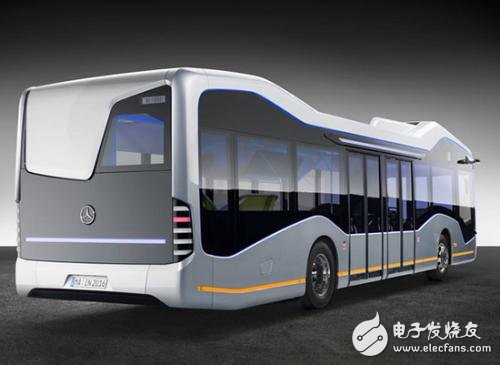The era of artificial intelligence _ how do we survive
Whether we are ready or not, the age of artificial intelligence is already here, and it's reshaping the way we live, work, and interact with the world. It's bringing about new models, innovative methods, and entirely new ecosystems across the national economy and everyday life, with a profound impact on how humans function in society.
In early December last year, a driverless bus made its debut in Shenzhen’s Futian district. This marked China's breakthrough in applying AI technology to achieve the world’s first fully autonomous driving on an open road, signaling a major step forward in smart transportation.
A decade ago, artificial intelligence was mostly seen as a concept from science fiction films. Today, it has quietly become part of our daily lives. Regardless of our willingness, the AI era is already underway, bringing significant changes to economic structures, social systems, and personal routines, and will continue to shape the future of work and life.

Renowned Israeli historian Yuval Noah Harari made a striking prediction in his globally acclaimed book, "Sapiens: A Brief History of Humankind." He suggested that artificial intelligence and biotechnology are redefining the world, and humanity may face unprecedented challenges. According to him, only 1% of people might evolve into a new species, while the remaining 99% could be rendered obsolete.
While Harari’s predictions may not be entirely accurate, they are not without foundation. Historically, machines have taken over physical labor, but now they are encroaching on intellectual tasks. Reports of robots replacing journalists, chefs, and even lawyers are becoming more frequent. Even high-paying legal professionals, such as intellectual property and bankruptcy lawyers, are facing threats from AI-powered tools. For example, natural language processing software can cut the cost of legal cases by up to 99%. In the future, many jobs—especially those involving repetitive, data-driven, or objective tasks—may be handled by AI.
However, we don’t need to panic about becoming part of the “useless class.†Every technological revolution has eliminated some jobs, but it also creates new opportunities. The rise of trains, for instance, reduced the need for certain porters, but it also created a whole new industry of railway workers. The key question today is: How can we adapt and thrive in the AI era?
First, we must unlock our own intellectual potential. While AI excels at processing massive amounts of data with precision, it lacks deep independent thinking. If innovation and wisdom were essential for human progress in the past, they are now vital for survival in the AI era. We must learn to think critically, creatively, and independently.
Second, we should cultivate strong values and a deeper sense of humanity. AI is excellent at logical analysis, often surpassing humans in this area. But it cannot grasp emotions, understand the meaning behind art, or feel the depth of a Shakespearean tragedy. It can write news reports, but it can’t inject human judgment, empathy, or passion into them like real journalists. In the AI era, those who bring heart, creativity, and emotional intelligence to their work are unlikely to be replaced by machines.
Surviving in the age of artificial intelligence is no longer just a distant concern—it’s a pressing challenge that all of us must confront. As we step into this new era, it’s time to rethink what it means to be human, and how we can use our unique strengths to shape the future.
The patch antenna, also known as a microstrip antenna, is a type of planar antenna that has found widespread application in modern communication systems due to its low profile, lightweight, and ease of integration with various electronic devices. This article delves into the various classifications of patch antennas, highlighting their unique features and areas of application.
1. Shape Classification
Patch antennas can be categorized based on their shape, which significantly influences their radiation patterns and performance characteristics.
-
Rectangular Patch Antennas: The most common form, rectangular patch antennas offer simple design and fabrication processes. They exhibit a directional radiation pattern with a main beam along the broadside of the antenna.
-
Circular Patch Antennas: Circular patch antennas offer a more omnidirectional radiation pattern, making them suitable for applications requiring broad coverage. They are also visually appealing and can blend seamlessly into various environments.
-
Other Shapes: Innovations in antenna design have led to the development of patch antennas with irregular shapes, such as triangular, hexagonal, and elliptical. These unique shapes can offer customized radiation patterns tailored to specific application requirements.
2. Feeding Mechanism Classification
The method of feeding the antenna, i.e., how the RF signal is coupled to the antenna, is another critical aspect of patch antenna classification.
-
Microstrip Line Feed: In this method, the feedline is placed parallel to the patch and connected to it via a gap or coupling aperture. It offers good impedance matching and ease of integration with microstrip circuits.
-
Coplanar Waveguide Feed: This technique involves placing the feedline in the same plane as the ground plane, simplifying fabrication and reducing cross-talk between adjacent antennas.
-
Aperture-Coupled Feed: Aperture-coupled patch antennas use a slot in the ground plane to couple the feedline to the patch. This method provides better isolation between the feed network and the radiating element, resulting in improved antenna performance.
GSM Patch Antenna,FM AM Patch Antenna,2.4G patch Antenna,4G Patch Antenna,5G Patch Antenna
Yetnorson Antenna Co., Ltd. , https://www.yetnorson.com